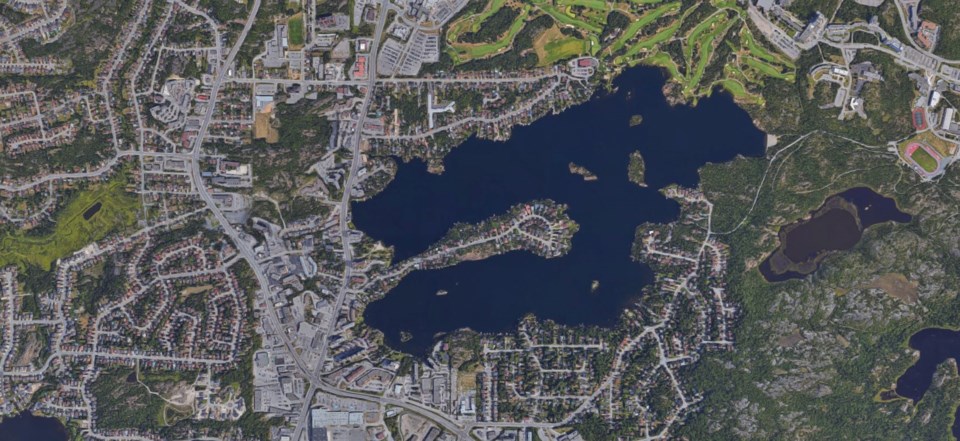As Cape Town, South Africa faces the “end of water” with its drying reservoirs, Sudbury too needs to get smarter about how we manage the “City of Lakes” in a period of climate change, microplastics, pesticides, new man made chemicals etc.
Nepahwin Lake is a brilliant example of the challenges we face and the need for smart technologies and more modern management approaches if we are indeed going to promote Sudbury as a place to live and invest.
Nepahwin used to be called Trout Lake when it was a remote “camp lake” for the growing town of Sudbury in the early 1900’s. Yes it did have lake trout then, and some stocked trout are now back in the lake, but today’s lake, as this aerial image shows, would be unrecognizable to early Sudburians, with its 100s of millions of dollars in development along its shores and across its watershed.
The deterioration of Nepahwin through poor stormwater management brought federal attention when Department of Fisheries and Oceans (DFO) officers marched into City Hall and sued the City for destruction of fish habitat back in 2005. This led to many millions of dollars needing to be spent on dredging the silt plumes in front of culverts, paying for consultants to do a subwatershed drainage study and then building large concrete sediment collectors on the various streams entering the lake to collect debris, floating oil and sand.
These “standard” technologies and engineering approaches proved not to be smart enough to deal with the real issues that concerned the public. Issues like dissolved road salt, pesticides, fertilizers and even PCBs, which was showing up in the stocked fish. Now, 12 years after the DFO visit to City hall, and in spite of the substantial financial investment, the real problems have not been solved and many residents are seeing noxious algal blooms in their backyard swimming lake for the first time, and several invasive species have arrived (spiny water fleas, milfoil).
To those who feel that we shouldn’t be concerned with the ‘problems’ faced by those lucky enough to live on a lake, please try to remember that the lakes are our indicators of watershed health and how investors view our City. Like a canary in the coal mine, they let us know when something isn’t right and our lake issues extend clearly can be seen to extend far beyond a shoreline. For example, people would be surprised to know that Nepahwin’s watershed drainage area extends all along Long Lake Road, well past the Walmart, almost to the bypass.
The story of Nepahwin Lake will no doubt repeat itself throughout Sudbury, the “City of Lakes”, unless we learn from it as our lakes face an uncertain future with climate change and increasing watershed development. We need new and smarter tools and techniques to tackle these problems and better ways of keeping the public informed and involved in decision making in the future.
John Gunn
Director, Vale Living with Lakes Centre
Laurentian University
